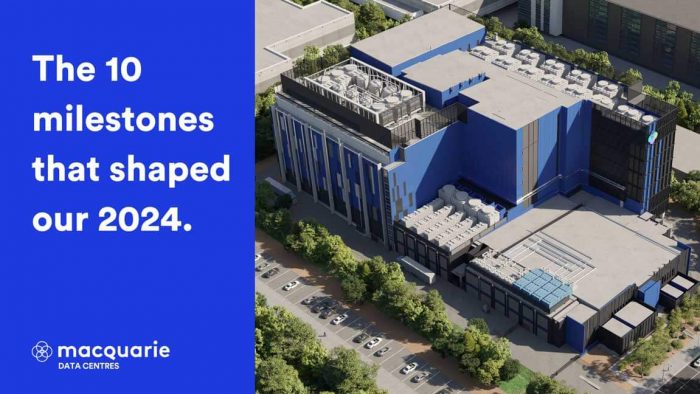AI and IoT Applications in the Data Centre: Optimising and Streamlining Performance
With hybrid, hyperscale and decentralised infrastructure on the rise, data centres are increasing in size and complexity.
The role of data centre managers is becoming broader and more complex, too. These days, operators are required to run weightier and more varied workloads than ever before. As such, hardware requirements can vary widely from workload to workload, from day to day, and even hour to hour.
As data centres become more hybrid and workloads are increased, moved, or flexed, it can also be hard to know and keep track of what’s changed. A company’s security team is unlikely to know which virtual machine has just been sped up, or what is running; and while it’s great to have this agility, it comes with a cost: imperfect information.
These trends pose challenges for data centre managers when provisioning hardware for new applications, identifying where there is available power capacity, and facilitating automation to minimise both headcount and downtime.
With more devices and users accessing the network throughout the Coronavirus pandemic, data centre managers are also having to work harder than ever before to meet bandwidth and security requirements.
Compounded by the heightened threat landscape, many data centre managers are turning to Artificial Intelligence (AI) and the Internet of Things (IoT) to help elevate security and performance.
How can AI and IoT help businesses with these challenges? Let’s take a look.
How is IoT Driving Data Centre innovation.
Previously considered to be within the same bracket as robot slaves and hoverboards, IoT is now set to revolutionise countless industries.
Smart devices will gather data through sensors, processors and other hardware, before sending it to an IoT cloud getaway for analysis – all without any human input required.
Moreover, processes and analytics are the major components in the digital transformation of companies. The sheer volume and variety of data that is being processed through businesses on a daily basis has more than necessitated the expedited growth of data centres worldwide. Thus, the continual implementation of more demanding digitalization processes has exacerbated the deployment of IoT in their operations, capacity building, business development, infrastructure, and systems utilization.
The opportunities for this technology are endless, spanning everything from providing more advanced healthcare services to keeping our roads safer, and even creating a more immersive experience at big music events.
At Macquarie Data Centres, we have always prided ourselves in being able to adapt and innovate to the data landscape. We’ve always been ahead of the IoT curve, establishing our data centres before the virtualisation trend became widely adopted. Our state of the art Intellicentres situated within the Sydney CBD, our Macquarie Data Centre Campus and Canberra Campus have been providing scalable and leading edge infrastructure and are trusted by 42% of Federal Government Agencies for these very reasons.
Data Centre Applications: The Impact of IoT and AI.
From the perspective of a company, the benefits of IoT are multi-faceted and far-reaching. As IoT devices evolve, we are slowly seeing the application of more effective cooling systems and security measures making anomaly detection and data centre management much more streamlined and efficient, consequently, making it much less costly to resolve these issues.
If implemented successfully, IoT can improve internal efficiency, provide a greater degree of control and automation, increase operational transparency, offer real-time insights into operations, automate processes, increase delivery speed, and provide more bespoke customer service, just to name a handful. These opportunities expand when IoT is partnered with AI and ML, enhancing the technology further.
Reducing Risk and External Threat from Data Centres.
With the added dependency on the internet and interconnected devices in recent months, security incidents such as unauthorised access, phishing, data breaches, social engineering, and denial of service, malware and zero-day attacks have all grown exponentially.
Ten years ago there were fewer than 50 million known malware executables. By 2012, there were 100 million and in 2020 there were a staggering 900 million. By the close of 2022, this figure is expected to jump even higher, with malicious actors taking advantage of remote workforces and under-resourced on-prem data centres. Thankfully, however, AI can help data centre managers stay ahead of these threats in a number of key ways.
Curating intelligence from millions of online sources, AI can gain an advanced knowledge of the threat landscape. It uses these insights to quickly identify relationships between threats, such as suspicious IP addresses, insiders or malicious files, and to detect vulnerabilities.
Behavioural data gathered from AI and IoT devices can also be monitored for consistency. Network or device user behaviour that deviates from the norm can be flagged instantly as a threat.
AI can effectively tell a security team, “here are the workloads we’re seeing and here are the ones with behaviours that are consistent with active attackers”. They can then help score and prioritise these threats – giving the security team more signals, more noise and less ambiguity when protecting their enterprise.
How IoT and AI are Optimising Configurations and Improving Performance.
IoT-connected devices can improve security, data flow, storage requirements, and access capabilities – freeing up a data centre manager’s time to focus on more critical tasks.
Thanks to the automation capacity that IoT infrastructure provides, they can manage everyday tasks such as updating systems, configuration, patching, and monitoring with little to no supervision.
Meanwhile, AI can be used to optimise server storage systems. Virtually anything that produces data can be fed into machine- or deep-learning tools to improve performance. In turn, data centre loads can become more predictable and easier to manage.
With these qualities, AI and IoT-managed data centres could streamline the data centre manager’s role in the future and create significant cost-savings.
At Macquarie Data Centres, our continued commitment to innovation and optimal performance configurations for your data infrastructure is what makes us the one of the most recommended Data Centre facilities in the world.
We put customer centricity at the forefront of everything we do, constantly looking to improve and streamline our processes to help you get everything you need out of our infrastructure. So with an NPS of +80, it’s no surprise that our customers agree.
Leak Detection and Prevention.
With much of the cooling infrastructure heavily reliant on the safe delivery of liquid, water leaks have become one of the greatest threats to data centre infrastructure. Whether it is a leaking air conditioner, water cooling for server racks, unanticipated condensation, groundwater or local plumbing, any of these pose great risks and show how costly the ramifications of water damage can be.
The application of leak detection sensors will alert support teams and engineers at the very first sign of a leak, allowing them to take instantaneous action. For example, devices with sensors can be placed in difficult-to-spot and reach locations like around CRAC (computer room air conditioning) systems, cooling distribution units, under raised floors, and any close to other potential leak sources (such as pipes). Spot leak sensors can be used to monitor and provide real time data regarding fluid overflows.
Temperature Monitoring and Regulation.
Downtime for a data centre is out of the question. These data centre facilities operate 24/7 x 365 days a year and thus, consume large volumes of energy and inevitably produce high amounts of heat. This is why temperature regulation and control within the data centre is essential to prevent equipment from overheating and running at maximum capacity without the risk of downtime from broken equipment. Moreover, temperature must be adequately monitored to ensure that IT infrastructure being housed within the facility is operating efficiently and with optimal power consumption.
Temperature sensors that are strategically placed in racks, and key “hotspots” around the facility such as AC (air conditioning) intake or discharge vents can monitor heat generation and output for a decentralised, granular control of the HVAC (heating, ventilation and air conditioning) system and CRAC unit.
This is also a critical application for reducing unnecessary energy consumption and reducing energy costs which represent the largest operational expense when it comes to data centres. Environmental sensors can save energy costs for every degree of upward change in the baseline temperature since temperature sensors at the rack inlet tend to provide far more accurate, real-time data regarding internal temperatures in comparison to CRAC readings alone. This information can be used to make the cooling system more efficient, for example shutdown CRAC units as needed.
Additionally along with temperature, humidity control is essential to avoid damage to equipment. High humidity may result in equipment corrosion while low humidity may result in a build-up of static electricity. Environmental sensors provide real-time insights to ensure optimal humidity levels across the facility.
Internal Air Quality Monitoring.
Indoor air quality is another environmental condition that must be regularly maintained for risk factors within data centres. Maintenance operations, infrastructure renovations, and equipment upgrades or replacement can introduce unwanted contaminants into the atmosphere of the facility. This also applies to outdoor air that is used as part of a holisitic ventilation, pressurisation and/or cooling system.
An indoor air quality monitoring system can proactively alert maintenance or support teams to potential hazards such as pollutants and particulates that could have severe consequences for electronic equipment, corrode contacts and reduce capabilities to failure point, which can result in extremely costly outages.
Liquid Cooling.
Liquid cooling has become somewhat of a given for most off-prem data centres, though there are obviously some risks posed by this sort of cooling infrastructure. These days, the application of IoT and AI within liquid cooling technologies has allowed the infrastructure to far surpass what was imaginable only a decade prior, pioneering more efficient and secure liquid immersion infrastructure.
Macquarie Data Centres is currently in partnership with ResetData, an industry leader in Submer immersion cooling technology. Submer tech not only brings heat dissipation and efficiency to Data Centre cooling, but it reduces the physical footprint of IT equipment by up to 90%.
Energy (and cost) efficiency.
Running a data centre with the help of AI and IoT can also make data centres ‘greener’, helping them find the best setting in real time. Using statistical algorithms and predictive analytics, AI and IoT tools can help manage temperature, ventilation and other environmental factors.
IoT technologies can also diagnose problems within the data centre including water leaks and cooling issues.
Technologies like this have already helped Google optimise its servers and cut its energy bill by a staggering 40 per cent. Gathering information from sensors on the server racks, Google’s deep learning AI tool helped to regulate the water pipes and cool its data centre environment.
With high-definition examples such as this, it is hoped that many other businesses will follow suit and embrace AI and IoT technologies within their data centres.
As outlined above, the benefits of these tools don’t stop at the enterprise level (in terms of security and performance). They extend to the societal level, with meaningful impact on the environment, too.
Not only do AI and IoT create a wealth of data that will require additional storage and compute capabilities over the coming years; these technologies also offer significant benefits in helping data centre managers elevate their server security and performance.
Facilitating Scalability through IoT.
Whilst these applications of IoT can undoubtedly help to increase the efficiency of data centre infrastructure management, it is still remains to be seen how data centre providers will begin to implement holistic AI and ML solutions.
Although temperature regulation, cooling and predictive maintenance are the most common applications of AI in the data center, more technical processes such as power management, workload management and security have yet to see significant traction or development due to the high upfront costs of developing these in-house.
Machine learning can also be deployed in addition to AI to automatically understand load patterns and predict when fluctuations will occur, as well as for infrastructure operations; for example for load transfer or intelligent switching between redundant and resilient equipment. This frees up the operational resource to concentrate on maintenance and repairs rather than running cycles.
For Hyperscale providers, further development of these applications could be a game changer to the workload and scale that can be effectively processed at their facility.
At Macquarie Data Centres, we specialise innovation and hyperscale. Our willingness and commitment to innovation when it comes to hyperscale data centres is unmatched and unparalleled. That’s why we can say with absolute confidence that any trends in the new normal for IoT and AI data centres will be assessed with great care to ensure that our customers are getting the most reliable and leading edge infrastructure, as well as the capacity to meet any requirements you may have.
Australian Pioneers in Data Centre Technology.
Rest easy, Macquarie Data Centres have always been at the very forefront of leading edge technology within Australia. That doesn’t mean we compromise on quality, but rather, we find newer and better ways of providing a higher quality and more reliable facility.
That’s why we are by far and away the number one choice for any Multinationals entering Australia. We want to ensure that we always have the absolute best available for our customers. Expanding your business overseas is already difficult enough. Make your data centre selection a bit easier and stress-free with us.
Read more about our colocation services in Sydney and Canberra.
Read more about our data centres in Sydney, Macquarie Park, and Canberra.




